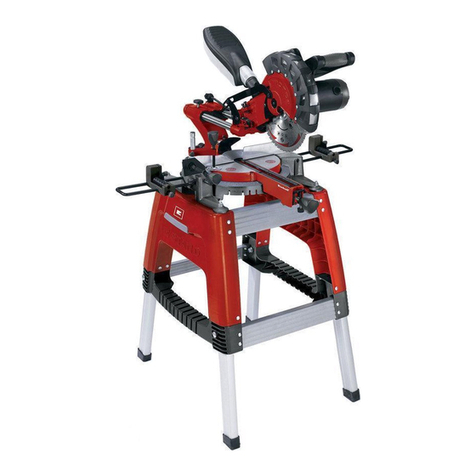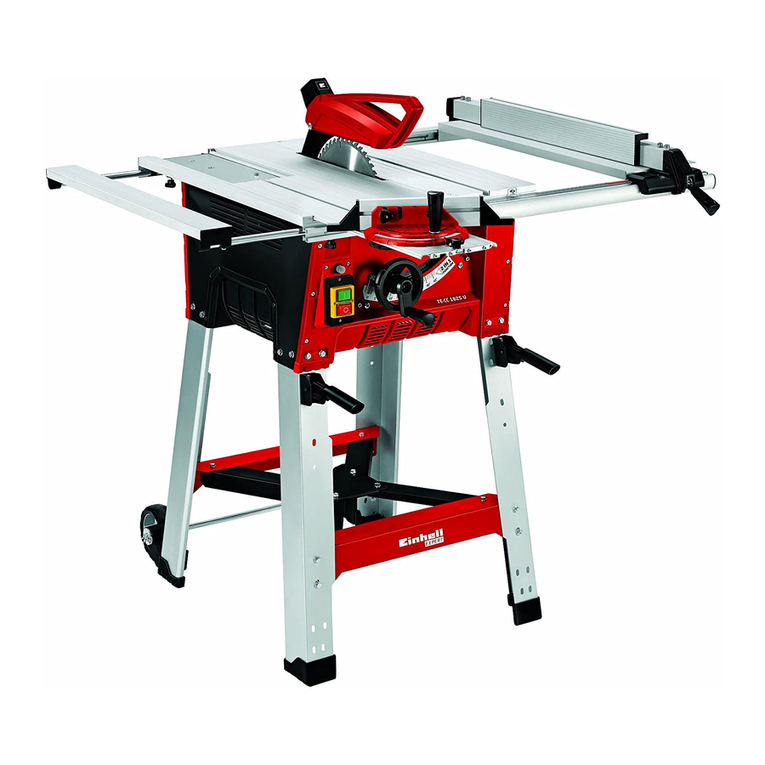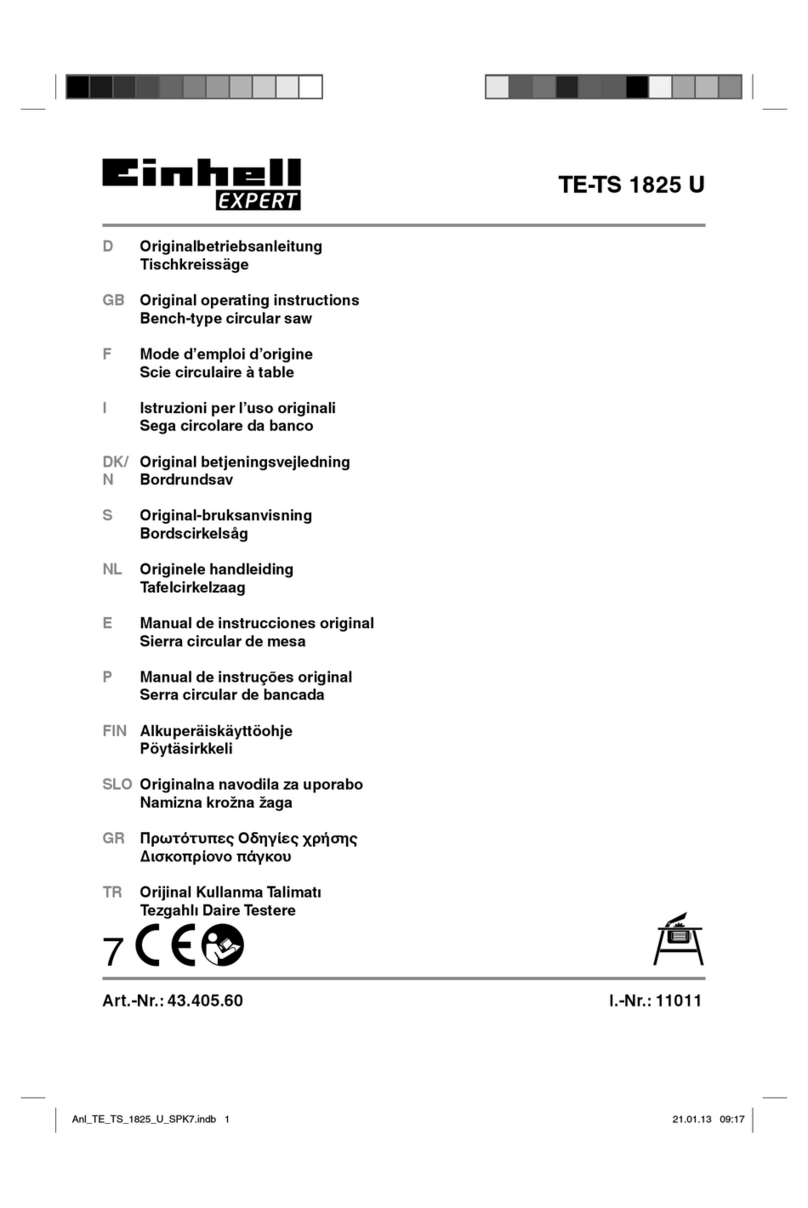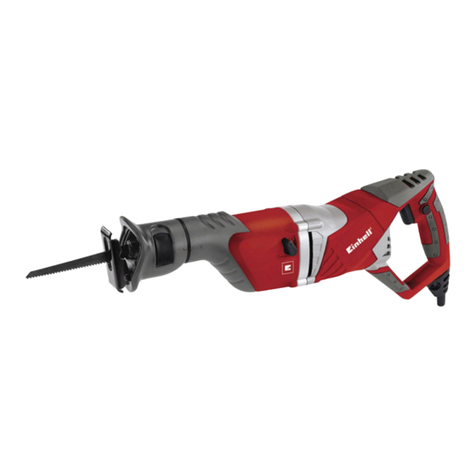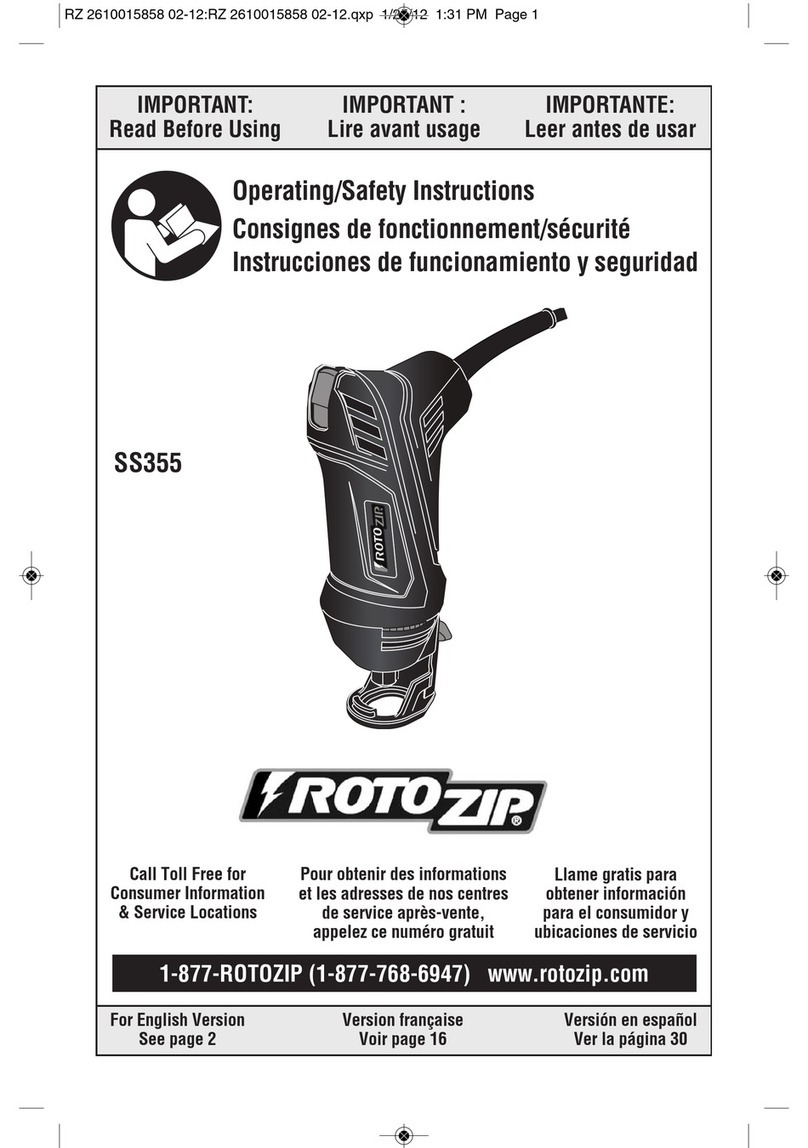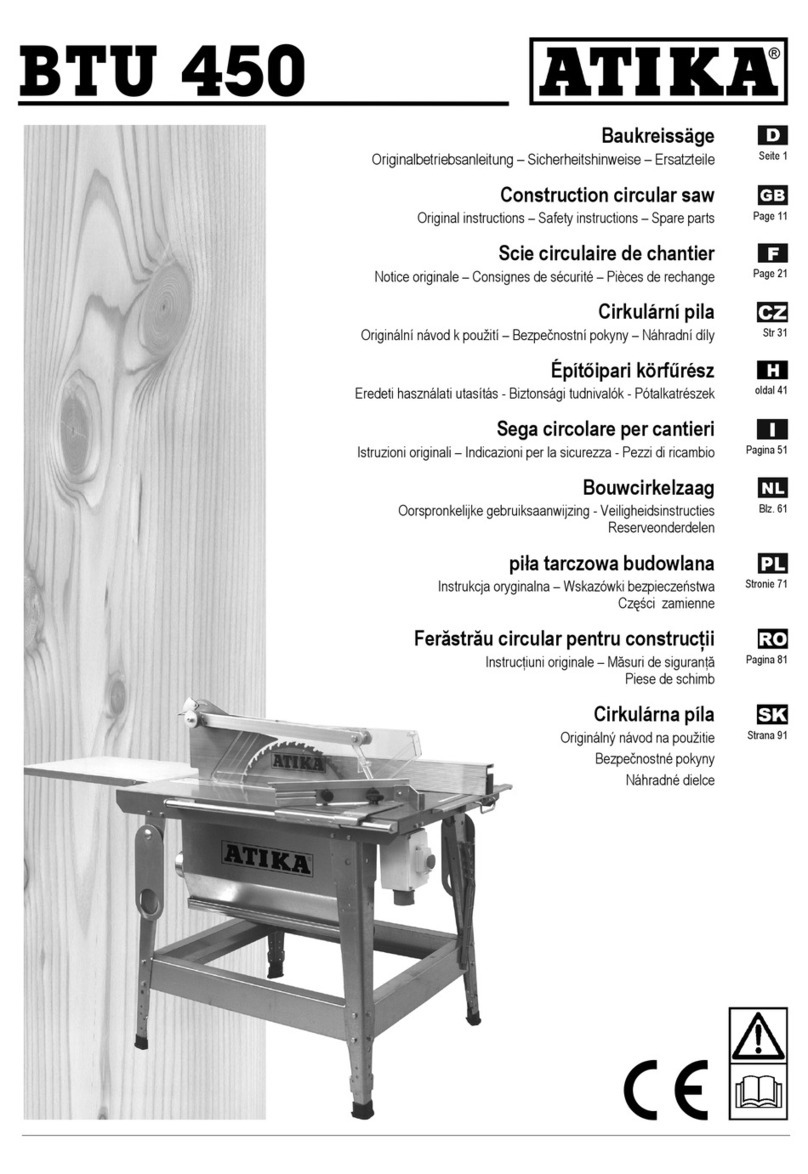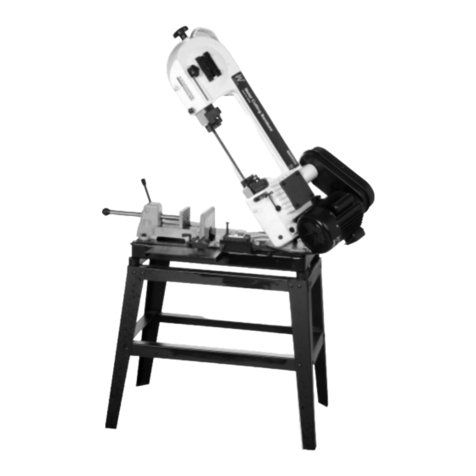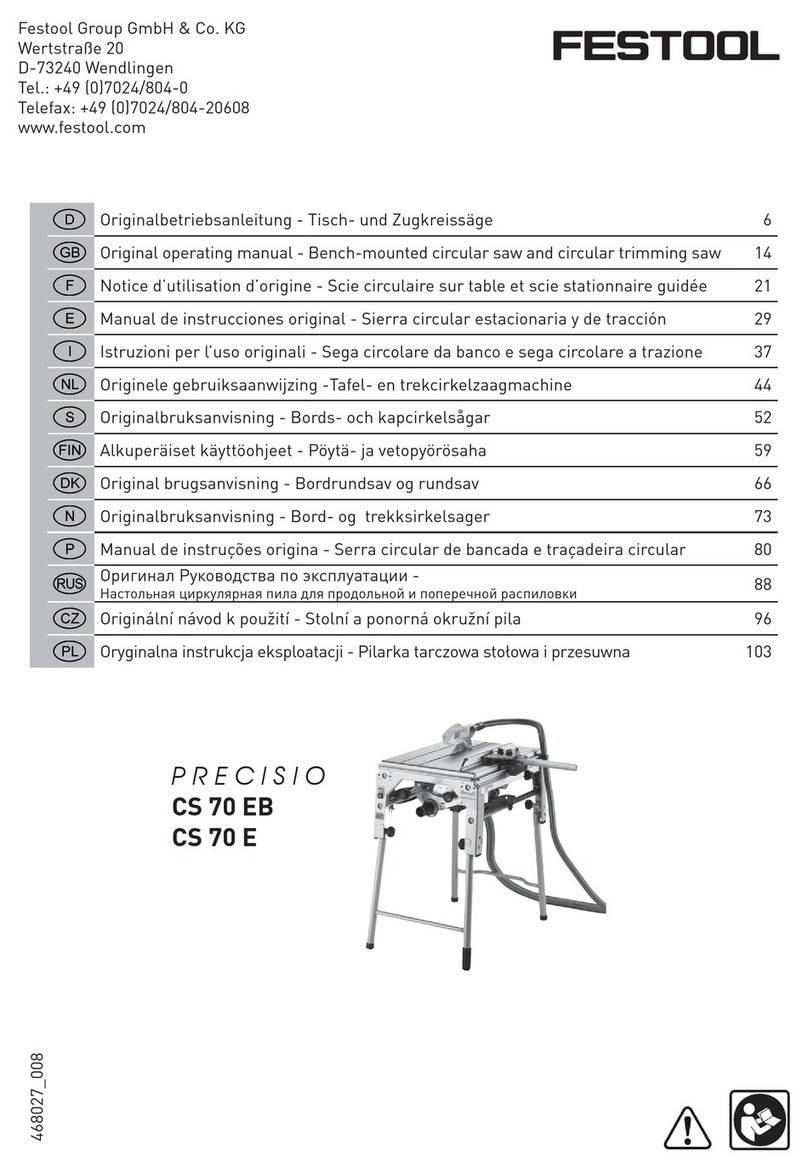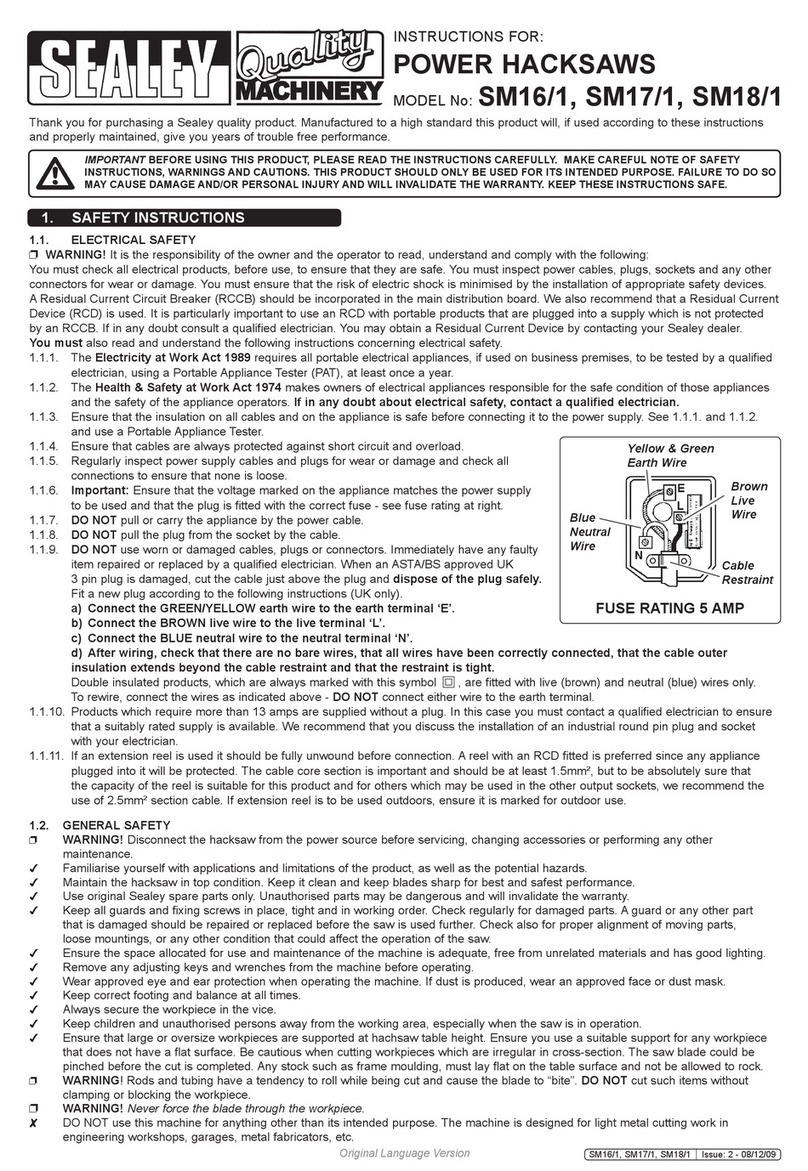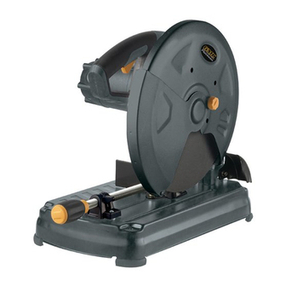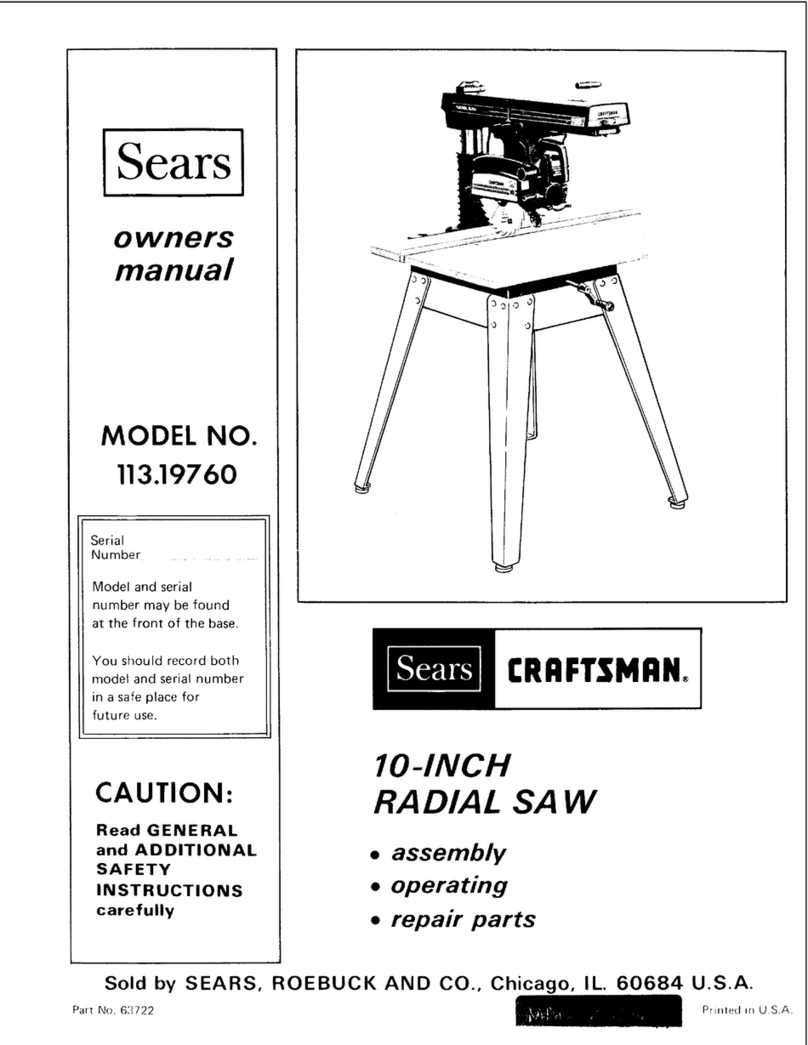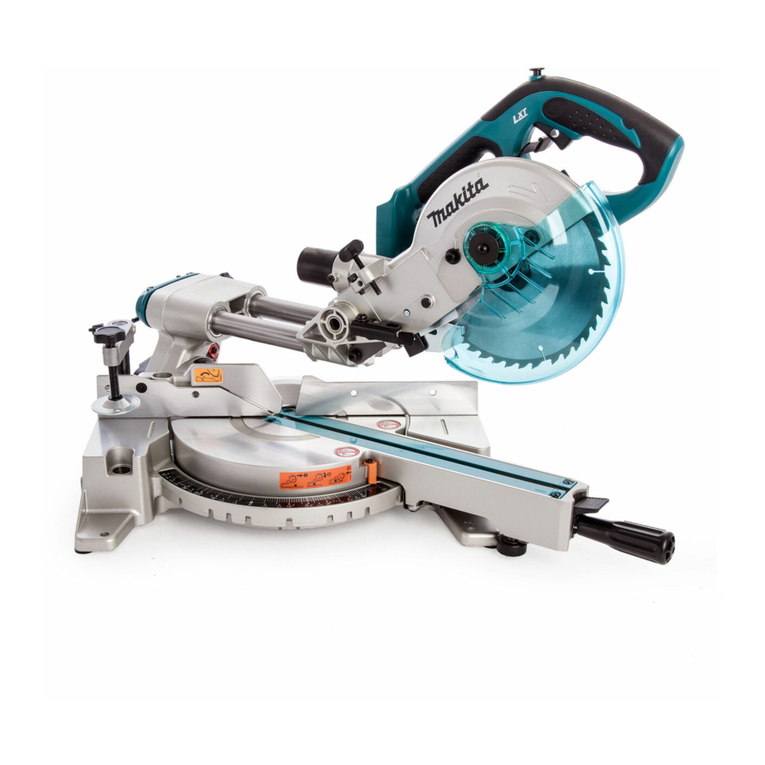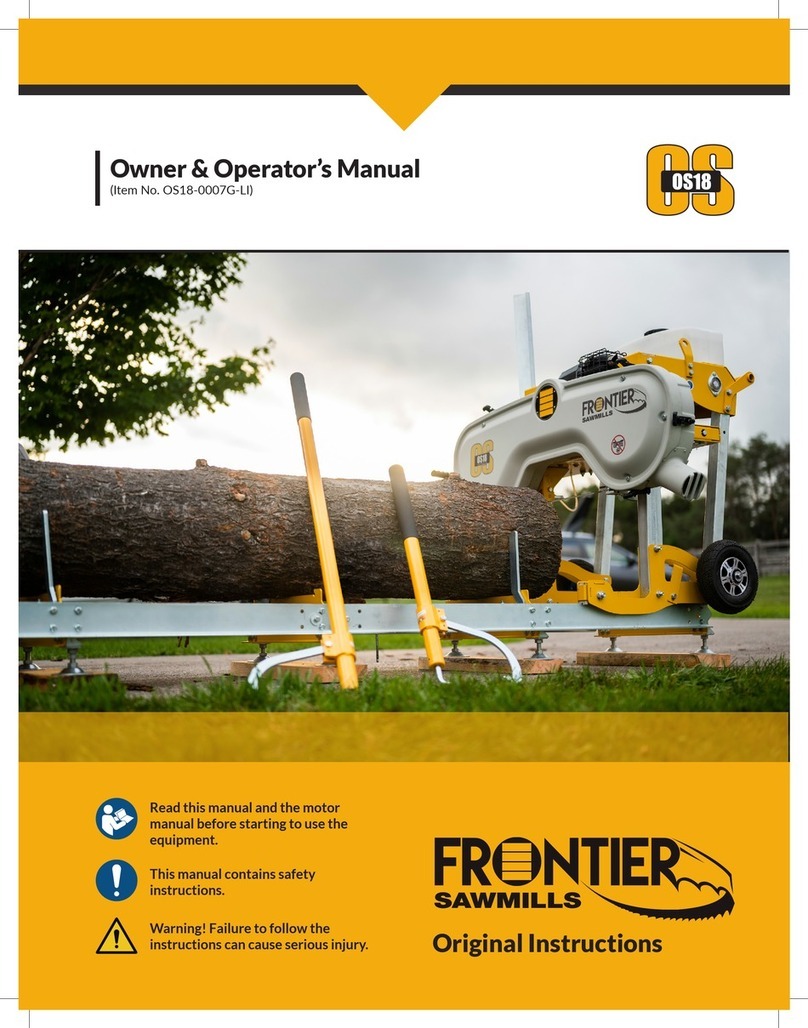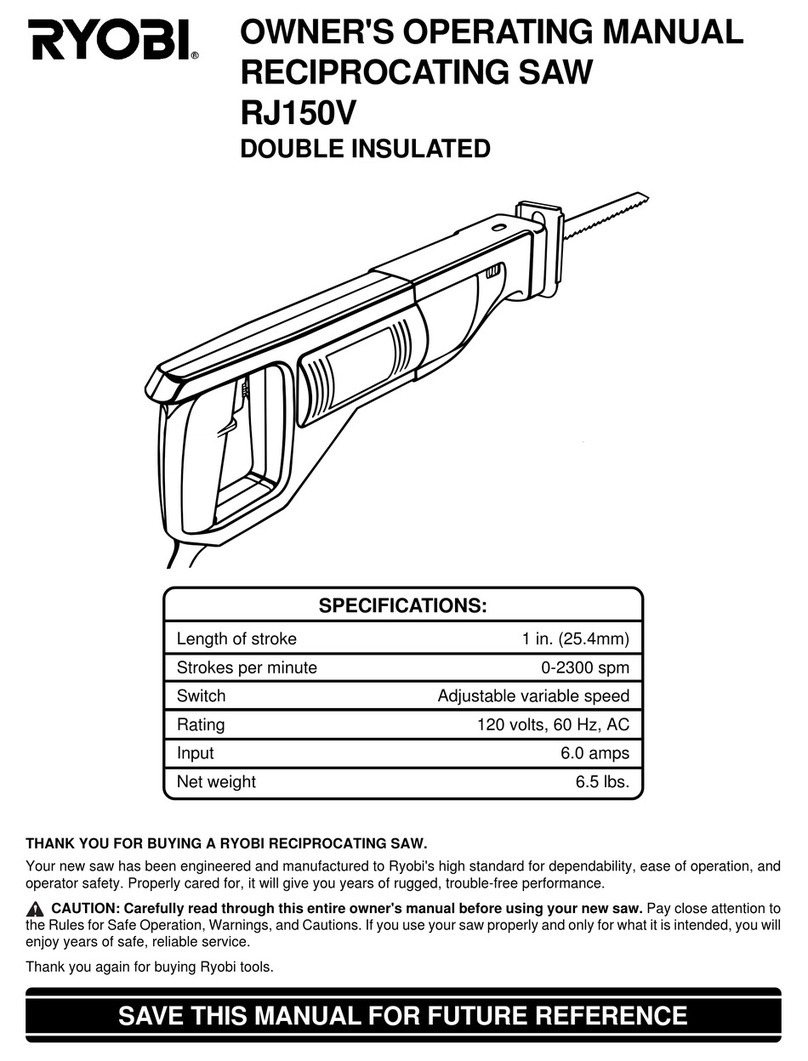EINHELL Expert TE-TS 1825 U User manual

TE-TS 1825 U
31011:.rN-.I16.504.34:.rN-.trA
7
GB
Original operating instructions
Table Saw
Anl_TE_TS_1825_U_SPK7.indb 1 21.01.13 09:17

- 2 -
1
2
10
16
22
18
12
14
8
1 2
3
8 18 18
24 10 25
21
3 4 5 6 7
10
9
11
13
16
171920
21
16
17
23
8
24
20
8 19 21 17 17
16 16 16 16 22
15
Anl_TE_TS_1825_U_SPK7.indb 2Anl_TE_TS_1825_U_SPK7.indb 2 21.01.13 08:5121.01.13 08:51

- 3 -
4 5
6 7
8 9
41 40
16
4
27 28
3
49
26
2 7 6
23 9 39 38
30 31 32 33
34
37
36
35
29
10
10
42
z
25
43
46
45
44
13 15
1721
17
21
16
41,36 39,36
Anl_TE_TS_1825_U_SPK7.indb 3Anl_TE_TS_1825_U_SPK7.indb 3 21.01.13 08:5121.01.13 08:51

- 4 -
10 11
20
19
12 13
22
14 15
18
37
33
39
36
38
24
25
33 39
41,36
41,36
Anl_TE_TS_1825_U_SPK7.indb 4Anl_TE_TS_1825_U_SPK7.indb 4 21.01.13 08:5121.01.13 08:51

- 5 -
16 17
18 19
20 21a
8
37
2
39 35
38
10
10
9 26 23
40,36 40,36 40,36 40,36 40,36 40,36
923
z
5
39,36
39,36
Anl_TE_TS_1825_U_SPK7.indb 5Anl_TE_TS_1825_U_SPK7.indb 5 21.01.13 08:5121.01.13 08:51

- 6 -
21b 22
3-5 mm
23 24
25 26
4
w
x y
43 30 5 31
67 6 7
w
47 47
Anl_TE_TS_1825_U_SPK7.indb 6Anl_TE_TS_1825_U_SPK7.indb 6 21.01.13 08:5121.01.13 08:51

- 7 -
27 28
29 30
31 32
28
429
45°
w
w w
27
48
Anl_TE_TS_1825_U_SPK7.indb 7Anl_TE_TS_1825_U_SPK7.indb 7 21.01.13 08:5221.01.13 08:52

- 8 -
33
Anl_TE_TS_1825_U_SPK7.indb 8Anl_TE_TS_1825_U_SPK7.indb 8 21.01.13 08:5221.01.13 08:52

GB
- 9 -
Caution - Read the operating instructions to reduce the risk of injury
Wear ear-muffs. The impact of noise can cause damage to hearing.
Wear safety goggles. Sparks generated during working or splinters, chips and dust emitted by the de-
vice can cause loss of sight.
Wear a breathing mask. Dust which is injurious to health can be generated when working on wood
and other materials. Never use the device to work on any materials containing asbestos!
Important. Risk of injury! Do not reach into the running saw blade.
Lifting point
Anl_TE_TS_1825_U_SPK7.indb 24 21.01.13 08:52

GB
- 10 -
Important!
-erpytefaswefa,tnempiuqeehtgnisunehW
cautions must be observed to avoid injuries and
damage. Please read the complete operating
instructions and safety regulations with due care.
Keep this manual in a safe place, so that the in-
formation is available at all times. If you give the
equipment to any other person, hand over these
operating instructions and safety regulations as
well. We cannot accept any liability for damage
or accidents which arise due to a failure to follow
these instructions and the safety instructions.
1. Safety regulations
The corresponding safety information can be
found in the enclosed booklet.
Caution!
Read all safety regulations and instructions.
Any errors made in following the safety regula-
tions and instructions may result in an electric
shock, fire and/or serious injury.
Keep all safety regulations and instructions
in a safe place for future use.
2. Layout and items supplied
2.1 Layout (Fig. 1-7)
1. Saw table
2. Splitter
3. Cover for extractor connection
4. Saw blade guard
5. Saw blade
6. Stop rail (parallel stop)
7. Parallel stop
8. Width extension table (left/right)
9. Guide rail for parallel stop (right)
10. Strut for width extension table
11. Clamp lever for parallel stop
12. Scale for saw blade angle
13. Adjustment lever for cutting height
14. Setting wheel for saw blade angle
15. Setting screw
16. Leg
17. Rubber foot (type A)
18. Cross strut, bent type
19. Plate
20. Cross strut, straight type
21. Rubber foot (type B)
22. Table supports
23. Guide rail for parallel stop (left)
24. Length extension table
25. Strut for length extension table
26. Connecting plate for guide rails
27. Stop rail for angle stop
28. Angle stop
29. Push stick
30. Key for changing the saw blade
31. Open-ended spanner 10 mm / 13 mm
32. Allen key
33. Self-locking nut
34. Nut
35. Washer, large
36. Washer, medium
37. Washer, small
38. Allen screw
39. Hex screw (M6 x 12)
40. Round-head screw (M6x 16)
41. Hex screw (M6 x 20)
42. Extractor connection (housing)
43. Table insert
44. Locking lever for saw blade angle
45. On/Offswitch
46. Overload switch
47. Scale
48. Groove
49. Locking grip
2.2 Items supplied
Please check that the article is complete as spe-
cified in the scope of delivery. If parts are missing,
please contact our service center or the nearest
branch of the DIY store where you made your
purchase at the latest within 5 work days after
purchasing the article and upon presentation of
a valid bill of purchase. Also, refer to the warranty
table in the warranty provisions at the end of the
operating instructions.
• -piuqeehttuoekatdnagnigakcapehtnepO
ment with care.
• ynadnalairetamgnigakcapehtevomeR
packaging and/or transportation braces (if
available).
• .deilppuserasmetillafieesotkcehC
• rofseirosseccadnatnempiuqeehttcepsnI
transport damage.
• litnugnigakcapehtpeekesaelp,elbissopfI
the end of the guarantee period.
Important!
The equipment and packaging material are
not toys. Do not let children play with plastic
bags, foils or small parts. There is a danger of
swallowing or suffocating!
Anl_TE_TS_1825_U_SPK7.indb 25 21.01.13 08:52

GB
- 11 -
• Splitter
• Saw blade guard
• Stop rail (parallel stop)
• Parallel stop
• Width extension table (1x left / 1x right)
• Guide rail for parallel stop (right)
• Strut for width extension table (4x)
• Clamp lever for parallel stop
• Longitudinal strut (3x without setting screw,
1x with setting screw)
• Rubber foot, type A (2x)
• Rubber foot, type B (2x)
• Cross strut, bent type (2x)
• Plate
• Cross strut, straight type (2x)
• Table support (2x)
• Guide rail for parallel stop (left)
• Length extension table
• Strut for length extension table (2x)
• Connecting plate for guide rails
• Stop rail for angle stop
• Angle stop
• Push stick
• Key for changing the saw blade
• Open-ended spanner 10 mm / 13 mm
• Allen key
• Self-locking nut (40x)
• Nut (6x)
• Washer, large (6x)
• Washer, medium (40x)
• Washer, small (6x)
• Allen screw (6x)
• Hex screw, size M6 x 12 (32x)
• Round-head screw, size M6x 16 (6x)
• Hex screw, size M6 x 20 (8x)
• Original operating instructions
• Safety information
3. Proper use
The bench-type circular saw is designed for the
slitting and cross-cutting (only with the cross
stop) of all types of timber commensurate with the
machine‘s size.The equipment is not to be used
for cutting any type of round wood.
The equipment is to be used only for its prescri-
bed purpose. Any other use is deemed to be a
case of misuse. The user / operator and not the
manufacturer will be liable for any damage or inju-
ries of any kind caused as a result of this.
Please note that our equipment has not been de-
signed for use in commercial, trade or industrial
applications. Our warranty will be voided if the
machine is used in commercial, trade or industrial
businesses or for equivalent purposes.
The equipment is to be operated only with suita-
ble saw blades (saw blades made of HM or CV)
It is prohibited to use any type of HSS saw blade
and cutting-offwheel.
To use the equipment properly you must also
observe the safety information, the assembly
instructions and the operating instructions to be
found in this manual.
All persons who use and service the equipment
have to be acquainted with these operating
instructions and must be informed about the
equipment‘s potential hazards. It is also imperati-
ve to observe the accident prevention regulations
in force in your area.The same applies for the
general rules of health and safety at work.
The manufacturer will not be liable for any chan-
ges made to the equipment nor for any damage
resulting from such changes. Even when the
equipment is used as prescribed it is still impossi-
ble to eliminate certain residual risk factors.
The following hazards may arise in connection
with the machine‘s construction and design:
• Contact with the saw blade in the uncovered
saw zone.
• Reaching into the running saw blade (cut
injuries).
• Kick-back of workpieces and parts of work-
pieces.
• Saw blade fracturing.
• Catapulting of faulty carbide tips from the saw
blade.
• Damage to hearing if essential ear-muffs are
not used.
• Harmful emissions of wood dust when used
in closed rooms.
Anl_TE_TS_1825_U_SPK7.indb 26 21.01.13 08:52

GB
- 12 -
4. Technical data
Mains voltage...........................230-240 V ~ 50Hz
Power P ....................S1 1500 W S6 40% 1800 W
Idle speed n0.......................................6,000 min-1
Carbide blade ................. Ø 250 x Ø 30 x 2.4 mm
Number of teeth .............................................. 24
Table size.......................................610 x 445 mm
Table width extension, left/right ......608 x 250 mm
Table length extension, rear ...........435 x 320 mm
Max. cutting height............................ 75 mm / 90°
.......................................................... 53 mm / 45°
Height adjustment..................... infinite 0 - 75 mm
Tilting saw blade ........................... infinite 0° - 45°
Extractor socket .....................................Ø 36 mm
Weight............................................. approx. 25 kg
Sound and vibration
Sound and vibration values were measured in
accordance with EN 61029.
Operation
LpA sound pressure level ..................... 95,7 dB(A)
KpA uncertainty ............................................. 3 dB
LWA sound power level ..................... 108,7 dB(A)
KWA uncertainty ............................................. 3 dB
The quoted values are emission values and not
necessarily reliable workplace values. Although
there is a correlation between emission and im-
mission levels it is impossible to draw any certain
conclusions as to the need for additional precau-
tions. Factors with a potential inuence on the ac-
tual immission level at the workplace include the
duration of impact, the type of room, and other
sources of noise etc., e.g. the number of machi-
nes and other neighboring operations. Reliable
workplace values may also vary from country to
country. With this information the user should at
least be able to make a better assessment of the
dangers and risks involved.
Wear ear-muffs.
The impact of noise can cause damage to hea-
ring.
Keep the noise emissions and vibrations to a
minimum.
• -rowtcefrepnierahcihwsecnailppaesuylnO
king order.
• .ylralugerecnailppaehtnaelcdnaecivreS
• .ecnailppaehttiusotelytsgnikrowruoytpadA
• .ecnailppaehtdaolrevotonoD
• -enrevenehwdecivresecnailppaehtevaH
cessary.
• .esunitonsitinehwffoecnailppaehthctiwS
Residual risks
Even if you use this electric power tool in
accordance with instructions, certain resi-
dual risks cannot be rules out. The following
hazards may arise in connection with the
equipment’s construction and layout:
1. Lung damage if no suitable protective dust
mask is used.
2. Damage to hearing if no suitable ear protec-
tion is used.
3. Health damage caused by hand-arm vib-
rations if the equipment is used over a pro-
longed period or is not properly guided and
maintained.
5. Before starting the equipment
Before you connect the equipment to the mains
supply make sure that the data on the rating plate
are identical to the mains data.
Always pull the power plug before making
adjustments to the equipment.
• Unpack the bench-type circular saw and
check it for damage which may have occurred
in transit.
• Make sure the machine stands securely, i.e.
bolt it to a workbench or solid base.
• All covers and safety devices have to be pro-
perly fitted before the equipment is switched
on.
• It must be possible for the blade to run freely.
• When working with wood that has been pro-
cessed before, watch out for foreign bodies
such as nails or screws, etc.
• Before you actuate the On/Off switch, make
sure that the saw blade is correctly fitted
and that the equipment‘s moving parts run
smoothly.
Anl_TE_TS_1825_U_SPK7.indb 27 21.01.13 08:52

GB
- 13 -
6. Assembly
Important. Always screw together the connections
which have self-locking nuts (see. Fig. 5, Item 33)
by turning the hex screw while holding the self–lo-
cking nut firmly to fasten tightly.
6.1 Assembling the base frame (Fig. 8-13)
• Turn the saw upside down and place it on the
floor.
• Use the hex screws (41), washers (36) and
nuts (33) to fasten the two front legs (16) loo-
sely to the front of the saw.
• Use the hex screws (41), washers (36) and
nuts (33) to fasten the two back legs (16) loo-
sely to the back of the saw.
• Do not yet screw any screws into the two
drill holes in the middle at the back, as this is
where the struts for the length extension table
are to be fastened later (see 6.2.1).
• Use the hex screws (39), washers (36) and
nuts (33) to fasten all four legs to the sides of
the machine.
• Do not yet screw any screws into the outer
drill holes, as this is where the struts for the
width extension tables are to be fastened
later (see 6.2.2).
• Mount the rubber feet (17, 21) on the legs.
• Screw the cross struts (20) loosely to the legs
and also screw the table supports (22) to the
rear legs and cross struts at the same time
such that they point towards the rear of the
machine and touch the ground.
• Screw the plate (19) to the bent cross struts
(18), then screw the bent cross struts loosely
to the legs.
6.2 Fitting the table width extension and table
length extension
6.2.1 Length extension table (Fig. 14-16)
• Loosely fasten the length extension table (24)
to the saw table using the Allen screws (38)
and the washers (37).
• Screw the struts (25) loosely to the length ex-
tension table and the machine housing.
• To fasten the length extension table to the
machine housing, use the hex screws (41),
washers (36) and nuts (33).
• Align the table length extension with the saw
table (1) so that it is flat and tighten all the
nuts and screws.
6.2.2 Width extension table (Fig. 17-18)
• Loosely fasten the width extension table (8) to
the saw table using the Allen screws (38) and
the washers (37). Use the rear holes closer to
the table length extension to mount the table
width extension.
• Screw the struts (10) loosely to the width ex-
tension table and the machine housing.
• To fasten the width extension table to the
machine housing, use the hex screws (39),
washers (36) and nuts (33).
• Align the table width extension with the saw
table (1) so that it is flat and tighten all the
nuts and screws.
6.2.3 Guide rails for parallel stop (Fig. 19-20)
• Insert two round-head screws (40) into the
groove in each of the left and right guide rail
(9, 23) respectively.
• Loosely fasten the round-head screws (40)
to the width extension tables (8) and the saw
table (1). Use the nuts to do so (34).
• Then fasten the connecting plate (26) to the
saw table (1) using two round-head screws
(40) and two nuts (34).
• Slide the guide rails onto the connecting plate
(26) and loosely tighten all the round-head
screws.
• Once you have stood the table on its legs,
you can check the position of the guide rails.
The zero point on the scale on the guide rail
must run into the intended cutting line of the
saw blade; check with the parallel stop. Now
fully tighten the round-head screws.
6.3 Fitting and setting the splitter
(Fig. 21a, 21b)
• Important. Pull out the power plug.
• Take out the table insert (43) (see 6.5).
• Insert the splitter (2) in the provided holder.
• Set the blade (5) to max. cutting depth, move
to 0° position and lock in place.
• Push up the splitter (2) until the gap between
the saw table (1) and the upper edge of the
splitter equals approx. 10 cm.
• The distance between the blade (5) and the
splitter (2) should be 3-5 mm.
• Tighten the screw (z) and mount the table
insert.
Anl_TE_TS_1825_U_SPK7.indb 28 21.01.13 08:52

GB
- 14 -
6.4 Fitting the saw blade guard (Fig. 1, 22)
• Fit the saw blade guard (4) in the oval hole
(y) in the splitter. Fasten the saw blade guard
using the screw (x) and tighten the screw only
enough to allow the saw blade guard to move
still.
• The saw blade guard must always be lowered
over the workpiece before you begin to cut.
• To connect the suction hose of an extraction
system, the cover (3) on the saw blade guard
can be removed (suction hose/extraction sys-
tem not included).
• The machine is not allowed to be used wit-
hout the saw blade guard.
6.5 Replacing the table insert (Fig. 23)
• The table insert has to be opened if you need
to replace it if it gets damaged and whenever
you change the blade or set the splitter.
• To prevent increased likelihood of injury, you
should replace the table insert whenever it is
worn or damaged.
• Important. Pull out the power plug.
• Remove the saw blade guard (4).
• Remove the countersunk head screws on the
table insert.
• Take out the table insert (43).
• Fit the replacement table insert by following
the above in reverse.
6.6 Fitting/replacing the blade (Fig. 24)
• Important. Pull out the power plug.
• Always wear gloves when handling saw bla-
des. Risk of injury!
• Remove the table insert by undoing the two
countersunk head screws (see 6.5).
• Undo the nut with the one wrench (30) on the
nut itself and an open-ended wrench (31) on
the motor shaft to apply counter-pressure.
• Important. Turn the nut in the direction of rota-
tion of the saw blade.
• Take off the outer flange and pull the old saw
blade off the inner flange by dropping the bla-
de at an angle.
• Clean the blade flange thoroughly before fit-
ting the new blade.
• Mount and fasten the new saw blade in re-
verse order. Important. Note the running
direction. The cutting angle of the teeth
must point in running direction, i.e. for-
wards (see the arrow on the blade guard).
• Refit and set the splitter (2) and the saw blade
guard (4) (see 6.3., 6.4.)
• Check to make sure that all safety devices
are properly mounted and in good working
condition before you begin working with the
saw again.
7. Operation
7.1. ON/OFF switch and overload switch
(Fig. 7)
• To turn the saw on, press the green button
„I“. Wait for the blade to reach its maximum
speed of rotation before commencing with
the cut.
• To turn the equipment off again, press the red
button „0“.
The motor of this equipment is protected against
overload by an overload switch (46). If the rated
current is exceeded, the overload switch (46) will
shut down the equipment.
• Let the equipment cool down for several mi-
nutes.
• Press the overload switch.
• Press the green button „I“ to switch on the
equipment.
7.2. Cutting depth (Fig. 7)
Turn the hand crank (13) to set the blade (5) to
the required cutting depth.
Turn anti-clockwise:
larger cutting depth
Turn clockwise:
smaller cutting depth
7.3. Parallel stop
7.3.1. Stop height (Fig. 25, 26)
• The parallel stop (7) supplied with the bench-
type circular saw has two different guide
faces.
• For thick material you must use the stop rail
(6) as shown in Fig. 25, for thin material you
must use the stop rail as shown in Fig. 26.
• To change over the stop rail (6) you have to
slacken the two knurled screws (w) in order to
disconnect the stop rail (6) from the parallel
stop (7).
• Depending on the required cutting height, the
stop rail can be slid into two different grooves
on the parallel stop and secured with the
knurled screws.
• The stop rail can be taken off and fastened to
either the right or left parallel stop depending
Anl_TE_TS_1825_U_SPK7.indb 29 21.01.13 08:52

GB
- 15 -
on the purpose.
• The parallel stop is set at right-angles to the
guide rail at the factory. It can be readjusted
using two Allen screws (in the parallel stop).
7.3.2. Cutting width (Fig. 1, 25, 26)
• The parallel stop (7) has to be used when
making longitudinal cuts in wooden workpi-
eces.
• The parallel stop (7) can be mounted on eit-
her side of the saw table (1).
• The parallel stop (7) has to be mounted in the
guide rail (9, 23) of the saw table (1).
• The parallel stop (7) can be set to the requi-
red dimension with the help of the scale (47)
on the guide rail (1).
• You can clamp the parallel stop in the requi-
red position by pressing the lever (11).
7.3.3. Setting the stop length (Fig. 27)
• The stop rail (6) can be moved in longitudinal
direction in order to prevent the workpiece
from becoming jammed.
• Rule of thumb: The rear end of the stop co-
mes up against an imaginary line that begins
roughly at the center of the blade and runs at
an angle of 45° to the rear.
• Set the required cutting width
- Slacken the knurled screws (w) and push
the stop rail (6) forward until it touches the
imaginary 45° line.
- Retighten the knurled screws (w).
7.4. Angle stop (Fig. 28)
• Slide the angle stop (28) into the groove (48)
of the saw table.
• Slacken the knurled screw (w).
• Turn the stop rail (27) until the arrow points to
the angle required.
• Retighten the knurled screw (w).
Important.
• Do not push the stop rail (27) too far toward
the blade.
• The distance between the stop rail (27) and
the blade (4) should be approx. 2 cm.
7.5. Setting the angle (Fig. 4, 7)
• Undo the fixing handle (44).
• Turn the wheel (15) to set the desired angle
on the scale.
• Lock the fixing handle again in the required
angle position.
8. Operation
Important!!
• After every new adjustment we recommend
you to make a trial cut in order to check the
new settings.
• After switching on the saw, wait for the blade
to reach its maximum speed of rotation before
commencing with the cut.
• Take extra care when starting the cut!
• Never use the equipment without the suction
function.
• Regularly check and clean the suction chan-
nels.
8.1. Making longitudinal cuts (Figure 29)
Longitudinal cutting (also known as slitting) is
when you use the saw to cut along the grain of the
wood. Press one edge of the workpiece against
the parallel stop (7) while the flat side lies on the
saw table (1).The blade guard (4) must always
be lowered over the workpiece. When you make
a longitudinal cut, never adopt a working position
that is in line with the cutting direction.
• Set the parallel stop (7) in accordance with
the workpiece height and the desired width.
(See 7.3.)
• Switch on the saw.
• Place your hands (with fingers closed) flat on
the workpiece and push the workpiece along
the parallel stop (7) and into the blade (5).
• Guide at the side with your left or right hand
(depending on the position of the parallel
stop) only as far as the front edge of the gu-
ard hood.
• Always push the workpiece through to the
end of the splitter (2).
• The offcut piece remains on the saw table
(1) until the blade (5) is back in its position of
rest.
• Secure long workpieces against falling off
at the end of the cut (e.g. with a roller stand
etc.)
8.1.2. Cutting narrow workpieces (Fig. 30)
Be sure to use a push stick (29) when making
longitudinal cuts in workpieces smaller than 120
mm in width. A push stick is supplied with the
saw! Replace a worn or damaged push stick
immediately.
Anl_TE_TS_1825_U_SPK7.indb 30 21.01.13 08:52

GB
- 16 -
8.1.3. Cutting very narrow workpieces
(Fig. 31)
• Be sure to use a push block when making
longitudinal cuts in very narrow workpieces
with a width of 30 mm and less.
• The low guide face of the parallel stop is best
used in this case.
• There is no push block supplied with the
saw! (Available from your specialist dea-
ler) Replace the push block without delay
when it becomes worn.
8.1.4. Making angular cuts (Fig. 32)
Angular cuts must always be used using the par-
allel stop (7).
• Set the blade (5) to the desired angle. (See
7.5.)
• Set the parallel stop (7) in accordance with
the workpiece width and height (see 7.3.1)
• Carry out the cut in accordance with the work-
piece width (see 8.1.1., 8.1.2 and 8.1.3.)
8.1.5. Making cross cuts (Fig. 33)
• Slide the angle stop (28) together with the
stop rail (27) into one of the grooves in the
saw table (1) and adjust to the required angle.
(See 7.4.) If you also want to tilt the blade (5),
use the groove which prevents your hand and
the cross stop from making contact with the
blade guard.
• If necessary, position the stop rail (27) so that
it cannot collide with the saw blade when you
make your cut.
• Press the workpiece firmly against the stop
rail (27).
• Switch on the saw.
• Push the angle stop (28) and the workpiece
toward the blade in order to make the cut.
• Important: Always hold the guided part of the
workpiece. Never hold the part which is to be
cut off.
• Push the angle stop (28) forward until the
workpiece is cut all the way through.
• Switch off the saw again. Do not remove the
offcut until the blade has stopped rotating.
9. Replacing the power cable
If the power cable for this equipment is damaged,
it must be replaced by the manufacturer or its
after-sales service or similarly trained personnel
to avoid danger.
10. Cleaning, maintenance and
ordering of spare parts
Always pull out the mains power plug before star-
ting any cleaning work.
10.1 Cleaning
• ehtdnastnevria,secivedytefasllapeeK
motor housing free of dirt and dust as far as
possible. Wipe the equipment with a clean
cloth or blow it with compressed air at low
pressure.
• -miecivedehtnaelcuoytahtdnemmocereW
mediately each time you have finished using
it.
• tsiomahtiwylralugertnempiuqeehtnaelC
cloth and some soft soap. Do not use
cleaning agents or solvents; these could at-
tack the plastic parts of the equipment. Ensu-
re that no water can seep into the device. The
ingress of water into an electric tool increases
the risk of an electric shock.
10.2 Carbon brushes
In case of excessive sparking, have the carbon
brushes checked only by a qualified electrician.
Important! The carbon brushes should not be re-
placed by anyone but a qualified electrician.
10.3 Maintenance
There are no parts inside the equipment which
require additional maintenance.
10.4 Transport
• Only ever transport the machine by lifting it by
the saw table. Never use the safety devices
such as the saw blade guard and stop rails for
handling or transporting purposes.
• Suitable lifting points are marked with arrows
on the saw table.
• Secure the equipment against slipping; tie it
down securely.
10.5 Ordering replacement parts:
Please quote the following data when ordering
replacement parts:
• enihcamfoepyT
• enihcamehtforebmunelcitrA
• enihcamehtforebmunnoitacifitnedI
• deriuqertrapehtforebmuntraptnemecalpeR
For our latest prices and information please go to
www.einhell.com.au
Anl_TE_TS_1825_U_SPK7.indb 31 21.01.13 08:52

GB
- 17 -
11. Disposal and recycling
The equipment is supplied in packaging to pre-
vent it from being damaged in transit. The raw
materials in this packaging can be reused or
recycled.The equipment and its accessories are
made of various types of material, such as metal
and plastic. Never place defective equipment in
your household refuse. The equipment should
be taken to a suitable collection center for proper
disposal. If you do not know the whereabouts of
such a collection point, you should ask in your
local council offices.
12. Storage
Store the equipment and accessories out of
children’s reach in a dark and dry place at above
freezing temperature. The ideal storage tempe-
rature is between 5 and 30 °C. Store the electric
tool in its original packaging.
Anl_TE_TS_1825_U_SPK7.indb 32 21.01.13 08:52

GB
- 18 -
Warranty provisions
ytnarraWelpmaxEyrogetaC
Defect with regard to material or
construction
24 months
Wear parts* V-belt, carbon brushes, table
insert, push stick
6 months
-minafoesacniylnoytnarraWedalbwaS*selbamusnoC
mediate defect (24 hours after
purchase / date on the bill)
syadkrow5strapgnissiM
* Not necessarily included in the scope of delivery!
For consumables, wear parts and missing parts Einhell Australia guarantees the correction of defects or a
new delivery only if the defect is reported within 24 hours (consumables), 5 work days (missing parts) or
6 months (wear parts) after purchase and the purchase date is verified with the bill.
In case of defects concerning the material or construction, we kindly request you to submit the equip-
ment together with the fully completed warranty card supplied with the equipment. It is important that
you enter an exact description of the defect.
To do so, answer the following questions:
• Did the equipment work at all or was it defective from the beginning?
• Did you notice anything (symptom or defect) prior to the failure?
• What malfunction does the equipment have in your opinion (main symptom)?
Describe this malfunction.
Anl_TE_TS_1825_U_SPK7.indb 34 21.01.13 08:52
-ecalperrostcefedforiaperehtseetnaraugesahcrupuoyedamuoyerehwerotsehtrEinhell Australia o
ment of the equipment in accordance with the overview below. Statutory guarantee claims are unaffec-
ted.

GB
Anl_TE_TS_1825_U_SPK7.indb 33 21.01.13 08:52
The guarantee provided in this Guarantee Certificate is given by Einhell Australia Pty Limited
ACN 134 632 858 of 6/166 Wellington Street, Collingwood, Victoria (Telephone number 1300 922 271)
GUARANTEE
CERTIFICATE
EINHELL AUSTRALIA PTY LTD
6/166 Wellington Street
Collingwood VIC 3066
Australia
Phone: 1300 922 271
Dear
Customer,
All of our products undergo strict quality checks. In the unlikely event that your device develops a fault, please
contact our service department at the address shown on this guarantee certificate. Of course, if you would
prefer to call us then we are also happy to offer our assistance under the service number printed below.
Please note the following terms under which claims under the Einhell Express Guarantee can be made:
1. The benefits conferred by the Einhell Express Guarantee are in addition to all rights and remedies which
you may be entitled to under the Australian Consumer Law, and any other statutory rights you may have
under other applicable laws. This Einhell Express Guarantee does not exclude, restrict or modify any
We do not charge you for the Einhell Express Guarantee.
2. Our goods come with guarantees that cannot be excluded under the Australian Consumer Law. You are
entitled to a replacement or refund for a major failure and for compensation for any other reasonably
foreseeable loss or damage. You are also entitled to have the goods repaired or replaced if the goods
fail to be of acceptable quality and the failure does not amount to a major failure.
3. The Einhell Express Guarantee only covers problems caused by material or manufacturing defects, and
our liability under the Einhell Express Guarantee is limited, at our discretion, to the rectification of these
defects or replacement of the product. Please note that the product has not been designed for use in
commercial, trade or industrial applications. Consequently, the Einhell Express Guarantee will not apply
if the product is used in commercial, trade or industrial applications or for other equivalent activities.
4. The following are also excluded from the Einhell Express Guarantee: compensation for transport
damage, damage caused by failure to comply with the installation/assembly instructions or damage
caused by unprofessional installation, failure to comply with the operating instructions (e.g. connection to
the wrong mains voltage or current type), misuse or inappropriate use (such as overloading of the
product or use of non-approved tools or accessories), failure to comply with the maintenance and safety
regulations, ingress of foreign bodies into the product (e.g. sand, stones or dust), effects of force or
external influences (e.g. damage caused by the product being dropped) and normal wear resulting from
proper operation of the product. The Einhell Express Guarantee will also not apply if any attempt is made
5. The Einhell Express Guarantee is valid for a period of 2 years starting from the purchase date of the
product. Claims made under the Einhell Express Guarantee should be submitted before the end of this
guarantee period and within two weeks of the defect being noticed. No claims under the Einhell Express
Guarantee will be accepted if submitted after the end of this guarantee period. The original guarantee
period remains applicable to the device even if repairs are carried out or parts are replaced. In such
cases, the work performed or parts fitted will not result in an extension of the guarantee period for the
Einhell Express Guarantee, and the Einhell Express Guarantee will not apply for the work performed or
6. To make a claim under the Einhell Express Guarantee, please send the relevant product postage-free to
the address shown below and enclose either the original or a copy of your sales receipt or another dated
proof of purchase. It would help us if you could describe the nature of the problem in as much detail as
possible. If the defect is covered by the Einhell Express Guarantee, your product will be repaired
immediately and returned to you, or we will send you a new device (at our election).
Any costs incurred by you in making a claim under this Einhell Express Guarantee, unless specified
otherwise in this guarantee certificate, must be borne by you.
Of course, we are also happy to offer a chargeable repair service for any defects which are not covered by the
scope of the Einhell Express Guarantee or for products which are no longer covered by the Einhell Express
Guarantee. To take advantage of this service, please send the product to our service address.
such rights or remedies.
to tamper with the product.
parts fitted. This also applies when an on-site service is used.
(Einhell Express Guarantee).

EH 03/2013 (01)
Wartungsheft_Benzinmaeher_BS_SPK7:_ 06.09.2012 17:20 Uhr Seite 28
Other manuals for TE-TS 1825 U
1
This manual suits for next models
1
Table of contents
Other EINHELL Expert Saw manuals
